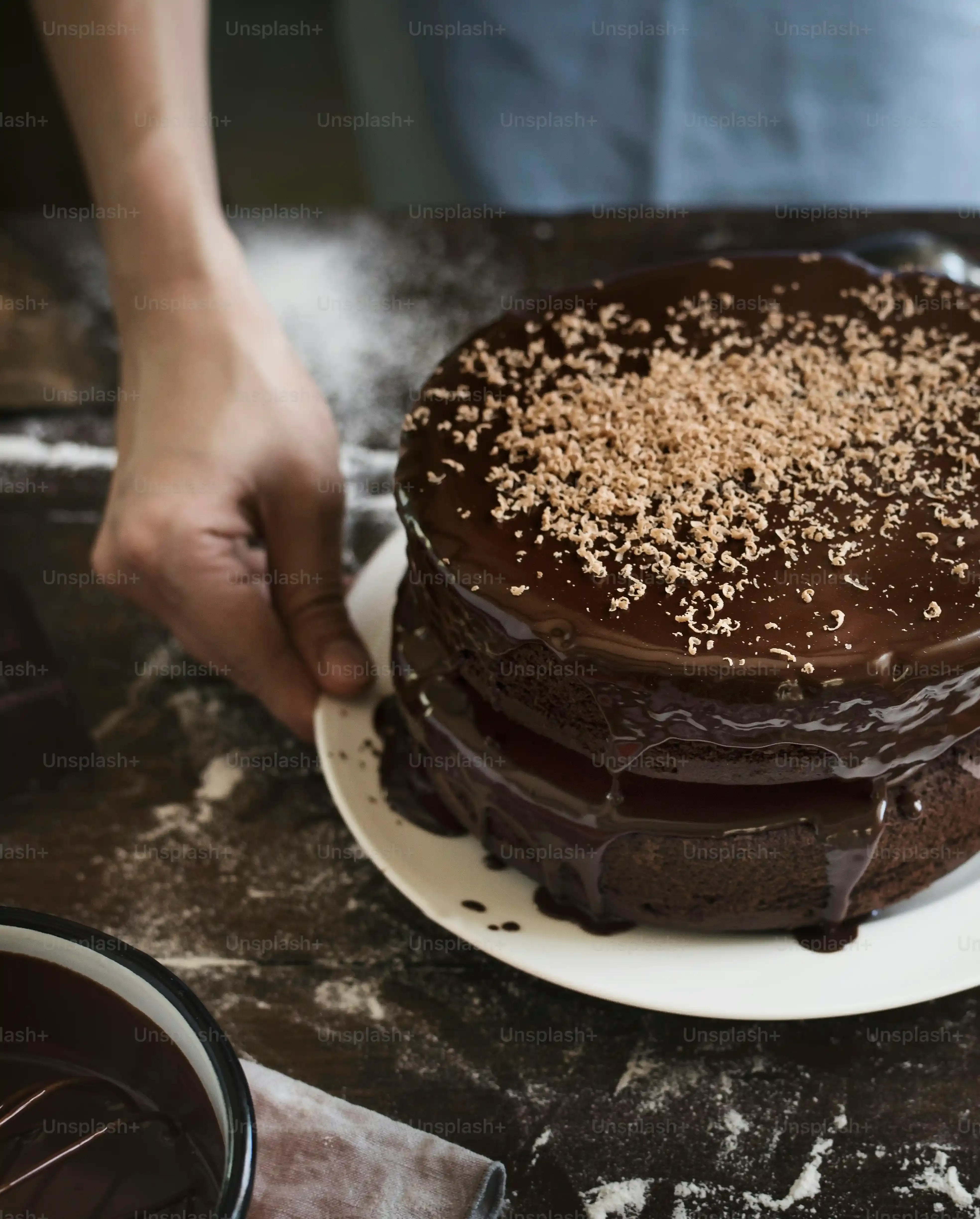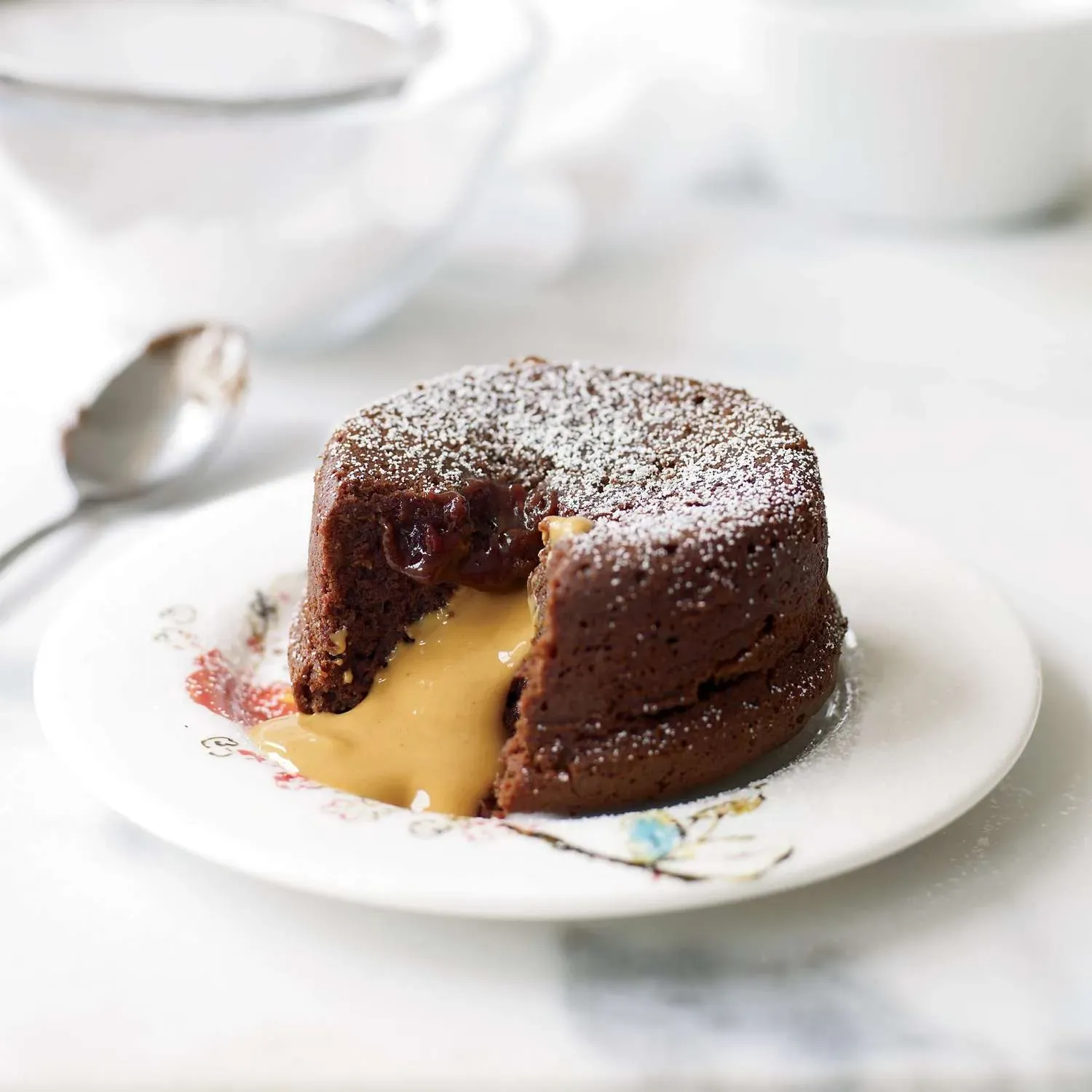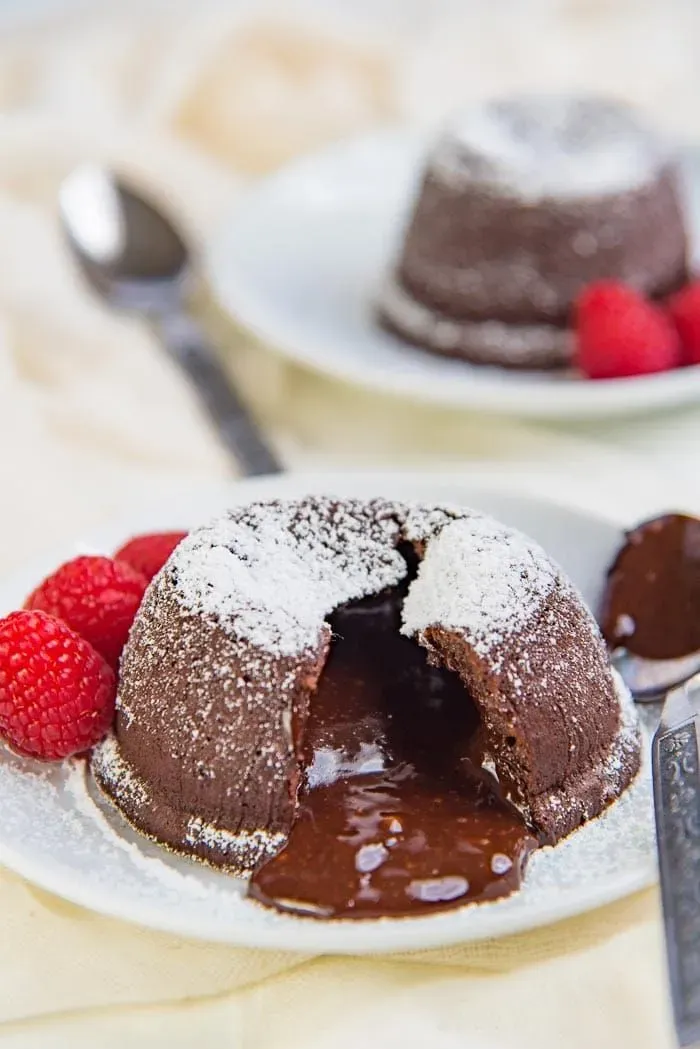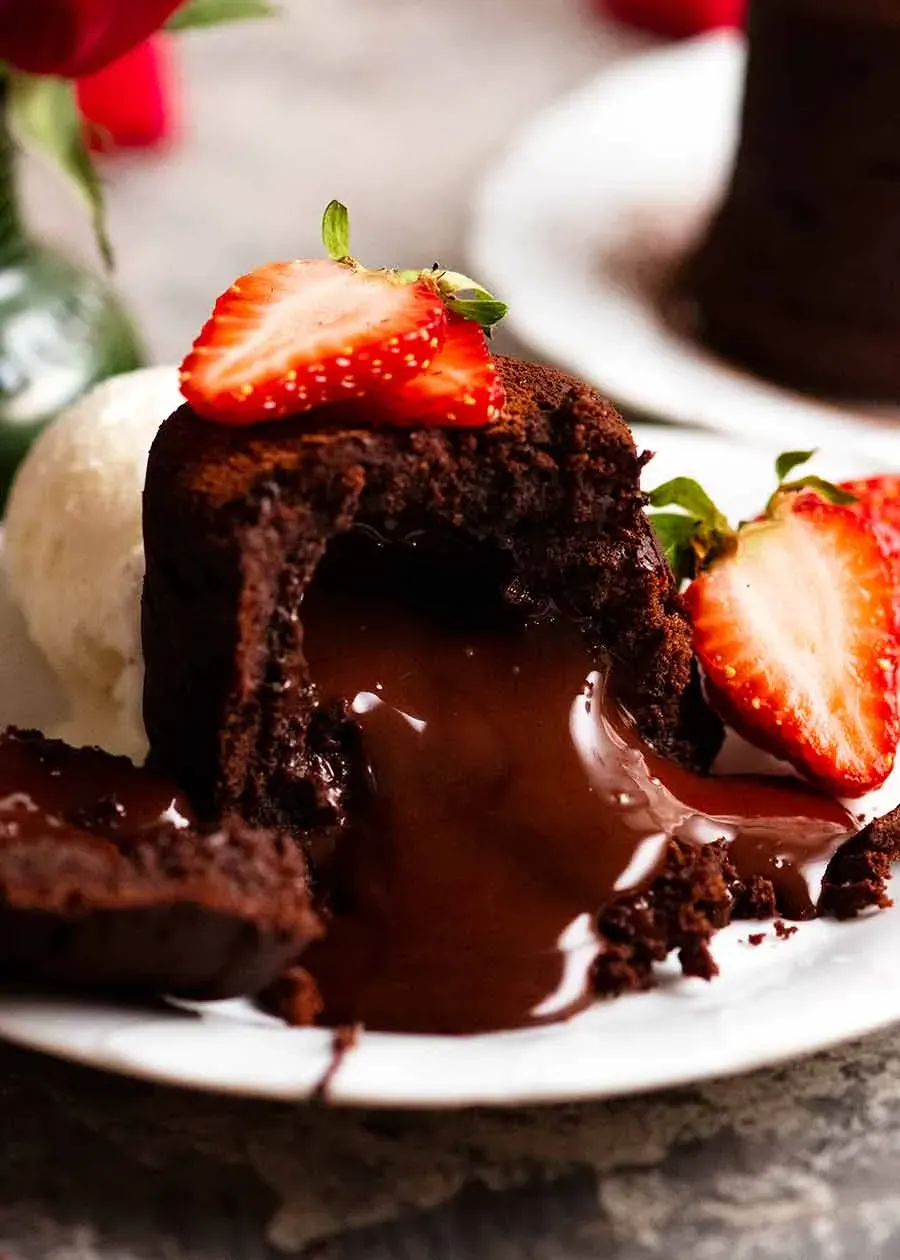Table of Contents
Ever sliced into a supposedly "molten" chocolate cake, only to find a sad, slightly gooey but mostly baked center? Yeah, that's a culinary heartbreak right there. You envisioned a river of warm chocolate, a decadent surprise spilling onto the plate, but instead, you got... well, not *that*. The magic of a lava cake isn't just the rich cake itself, it's that dramatic, irresistible flow from the middle. And getting that flow right consistently? That boils down to mastering thechocolate lava cake filling recipe.
What Makes the "Lava" in a Chocolate Lava Cake?

What Makes the "Lava" in a Chocolate Lava Cake?
The Underbaked Approach: A Risky Business
For years, the standard wisdom for getting that glorious flow in a chocolate lava cake was simple, if a bit nerve-wracking: just don't bake the cake all the way through. You'd whip up a standard rich chocolate cake batter, pour it into ramekins, and pull them out of the oven when the edges looked set but the very center was still quite liquid. The idea was that the still-raw batter in the middle would spill out when you cut into it, mimicking molten lava. It sounds straightforward, right? The problem is, this method is incredibly finicky. Oven temperatures vary, ramekin sizes aren't always exact, and judging that perfect point between raw batter and fully cooked cake is a skill that requires practice, a good oven, and maybe a bit of luck. Too long, and you have a slightly dense chocolate cake with no flow. Too short, and you have raw, unappetizing batter.
Introducing the Ganache Game-Changer
Enter the ganache filling method, the more reliable technique for achieving that sought-after molten core. Instead of relying on underbaked batter, this approach involves creating a separate, stable chocolate ganache. Ganache is typically a mixture of melted chocolate and hot cream. When chilled, it firms up but retains a lower melting point than baked cake. You scoop or place a piece of this firm ganache into the center of the cake batter before baking. As the cake bakes around it, the ganache inside simply melts from the heat, turning into a luscious, liquid chocolate center. Because the ganache is designed to melt, you don't have to stress as much about underbaking the cake part; you just need to bake the cake until it's set, and the ganache takes care of the lava effect. This method significantly increases your chances of success, delivering a predictable, decadent flow every time.
So, which method should you trust for yourchocolate lava cake filling recipe? Let's look at the core difference:
- **Undercooking:** Relies on raw batter staying liquid. Prone to failure if overbaked. Texture can be inconsistent.
- **Ganache Insert:** Relies on a pre-made, meltable core. More forgiving with baking time for the cake structure. Consistent, rich texture for the "lava".
Why the Ganache Method Works for a Reliable Chocolate Lava Cake Filling

Why the Ganache Method Works for a Reliable Chocolate Lava Cake Filling
The Science Behind the Melt
Look, at its core, ganache is just a fancy way of saying "melted chocolate stabilized with cream." But there's a bit more going on. When you heat cream and pour it over chopped chocolate, the heat from the cream melts the cocoa butter and sugar crystals in the chocolate. Stirring emulsifies the mixture, creating a smooth, stable sauce. The key here is that this mixture, once cooled slightly, has a specific melting point that's reliably lower than the temperature the cake bakes at. You pop a disc or ball of this semi-firm ganache into the batter. As the cake structure sets around it in the oven, the internal temperature rises, hits the ganache's melting point, and boom – it turns liquid. It's a controlled reaction, not a prayer that your raw batter doesn't cook.
Taking the Guesswork Out of Baking
Relying on underbaking for yourchocolate lava cake filling recipeis like betting on the weather in April – unpredictable. One oven might run hot, another cold. Your ramekins might be thicker or thinner than the recipe writer's. Even a minute or two too long can turn your potential lava into just moist cake. The ganache method sidesteps this entirely. You bake the cake until the exterior is set and structurally sound, which is a much easier target to hit. The ganache inside is doing its own thing, melting independently once the heat penetrates. This means you can focus on getting the cake part right without stressing constantly about the center solidifying prematurely. It gives you a much wider margin for error, which, frankly, is a win for most home bakers.
Comparing the Methods: Reliability
Method | "Lava" Composition | Baking Difficulty | Consistency |
|---|---|---|---|
Underbaking Batter | Undercooked cake batter | High (sensitive to time/temp) | Variable, prone to failure |
Ganache Insert | Melted ganache (chocolate + cream) | Moderate (focus on cake structure) | High, predictable melt |
A Superior Center, Flavor-Wise
Beyond just melting reliably, a ganache filling offers a superior texture and flavor compared to slightly raw cake batter. Raw batter, even if gooey, can sometimes have a slightly grainy or pasty texture and the flavor isn't fully developed. Ganache, on the other hand, is inherently smooth, rich, and intensely chocolatey. It's essentially a concentrated dose of deliciousness that melts into a velvety liquid. When you cut into the cake and that warm ganache flows out, you're getting pure, unadulterated melted chocolate goodness, not just... uncooked stuff. This makes the final dessert not just visually impressive, but also significantly more satisfying to eat. It’s the difference between a happy accident and a carefully engineered delight.
Your StepbyStep Guide to the Ultimate Chocolate Lava Cake Filling Recipe

Your StepbyStep Guide to the Ultimate Chocolate Lava Cake Filling Recipe
Gather Your Arsenal: Ingredients for the Ooze
Alright, let's get down to business. Making the ganache for yourchocolate lava cake filling recipeisn't rocket science, but ratios matter. You'll need good quality chocolate, and by good quality, I mean something you'd actually eat a bar of, not baking chips that taste like flavored wax. Semisweet or dark chocolate works best; milk chocolate is too sweet and doesn't firm up correctly. You'll also need heavy cream. That's it. Seriously. The classic ratio for a firm but still meltable ganache is roughly equal parts chocolate to cream by weight. So, if you're using 4 ounces of chocolate, you'll need 4 ounces of heavy cream. Chop your chocolate finely. This helps it melt evenly and quickly when the hot cream hits it. Measure your cream accurately; too little and your ganache might be too hard, too much and it could be too soft to handle.
The Hot Cream Meets Chopped Chocolate Waltz
Heat your heavy cream in a small saucepan over medium heat or in the microwave until it just starts to simmer around the edges. Don't boil it furiously; we're not making soup. Place your finely chopped chocolate in a heatproof bowl. Pour the hot cream directly over the chocolate. Let it sit for a minute or two without stirring. This gives the heat from the cream time to start melting the chocolate. Then, starting from the center of the bowl and working your way out, gently whisk the mixture until it becomes completely smooth and glossy. You're looking for a beautiful, uniform emulsion, not a lumpy mess. Once smooth, let the ganache cool slightly at room temperature, then cover it and chill it in the refrigerator until it's firm enough to scoop or cut, usually about 1-2 hours. It should be firm like soft fudge, not rock hard.
Ingredient | Approximate Ratio (by weight) | Purpose |
|---|---|---|
Good Quality Chocolate (Semisweet/Dark) | 1 part | Provides the chocolate flavor and structure |
Heavy Cream | 1 part | Melts the chocolate, creates smooth texture, controls firmness |
Troubleshooting Common Issues with Your Chocolate Lava Cake Filling

Troubleshooting Common Issues with Your Chocolate Lava Cake Filling
My Ganache is Hard as a Rock! What Went Wrong?
you followed the steps, you poured the hot cream over the chocolate, you stirred, you chilled, and now you've got a disc of chocolate that feels like it could stop a small projectile. This usually happens for a couple of reasons when making yourchocolate lava cake filling recipe. The most common culprit is the chocolate itself. If you used chocolate with a much higher cocoa butter content (like a very high percentage dark chocolate) or if you used baking chips that contain stabilizers, they will set up much firmer than standard semisweet or dark chocolate meant for melting. Another reason could be chilling it for too long. Remember, we want it firm enough to handle, not frozen solid. If this happens, you can gently re-warm the ganache slightly in a microwave (short bursts!) or over a double boiler until it's pliable again, then re-chill just until scoopable.
Why Isn't My "Lava" Oozing Properly?
You baked the cake, flipped it out, cut into it with anticipation, and... nothing. Or maybe just a little sad blob. This is frustrating, especially after nailing thechocolate lava cake filling recipeitself. The primary reason the ganache doesn't ooze is simply that it didn't get hot enough to fully melt inside the cake. This can happen if your oven temperature is lower than you think, or if you pulled the cakes out too early. The cake needs to bake long enough for the heat to transfer to the center and melt that ganache core. Ensure your oven is accurately calibrated. Another factor could be the size of your ganache insert relative to the cake; too large a piece in a small cake might take longer to melt, or too small a piece might just get absorbed. Make sure your ganache wasn't too firm to begin with, as mentioned above.
Problem | Possible Cause | Quick Fix/Prevention |
|---|---|---|
Ganache too hard | Wrong chocolate type, over-chilling | Use good quality chocolate, re-warm gently and re-chill briefly |
No or minimal ooze | Cake underbaked, oven temp low, ganache too firm | Check oven temp, bake slightly longer (watch edges), ensure ganache is pliable before inserting |
Ganache leaked out | Hole in batter seal, overfilling ramekin | Ensure batter completely covers ganache, don't overfill ramekins |
The Cake Edges Are Done, But I'm Still Worried About the Center Melting!
This is a common anxiety point. You see the cake edges pulling away slightly from the ramekin, the top looks set, maybe even a crack has appeared, but you're still mentally fixated on that molten middle. With the ganachechocolate lava cake filling recipe, you have more flexibility. Bake the cake until the edges are clearly set and the top springs back slightly when very gently touched. The center doesn't need to be liquid batter; it just needs to be cooked enough to form the cake structure. The heat retained in the cake, especially after you take it out of the oven, will continue to work on melting that ganache core. Trust the process. If the cake looks done on the outside, the ganache inside, assuming it was the correct consistency when inserted, is likely melting or will finish melting as it rests for a minute or two before serving. Trying to bake it longer "just in case" is how you end up with no lava at all.
Creative Twists: Variations on Your Chocolate Lava Cake Filling Recipe

Creative Twists: Variations on Your Chocolate Lava Cake Filling Recipe
Infusing Flavor into Your Molten Core
Once you've nailed the basicchocolate lava cake filling recipeusing the ganache method, the fun really begins. The beauty of ganache is its ability to absorb other flavors. Think beyond just plain chocolate. While the cream is heating, you can steep things in it. A vanilla bean pod, a few sprigs of fresh mint, or a strip of orange zest will impart subtle, sophisticated notes. For something bolder, stir in a tablespoon of espresso powder for a mocha kick, a pinch of cayenne for a touch of heat (a classic pairing with chocolate), or a splash of your favorite liqueur after the ganache is made and cooled slightly – think raspberry liqueur, coffee liqueur, or even a good quality rum. Just remember that adding liquids can affect the ganache's final consistency, so start small and adjust as needed. A little goes a long way in transforming a standard chocolate center into something truly memorable.
Playing with Different Chocolates and Beyond
Who says your lava has to be dark or semisweet chocolate? Experiment with different types of chocolate for yourchocolate lava cake filling recipe. A good quality milk chocolate ganache will be sweeter and creamier, though you might need a slightly different cream-to-chocolate ratio to get the right firmness (more chocolate, usually). White chocolate ganache, infused with vanilla or even some freeze-dried fruit powder, offers a completely different flavor profile. And you're not strictly limited to chocolate ganache. While chocolate is traditional, a thick, set caramel sauce or even a fruit curd (like raspberry or passion fruit) that melts when heated can create a stunning and unexpected "lava" center. Just ensure whatever filling you choose has a melting point low enough to liquify during the baking process and is thick enough when chilled not to completely dissolve into the batter.
- Espresso powder for mocha lava
- Mint sprigs steeped in cream for mint chocolate
- Orange zest for a citrus note
- A pinch of cayenne for a spicy kick
- Raspberry or coffee liqueur (added after chilling)
- White chocolate ganache variation
- Caramel sauce insert (test consistency!)
- Fruit curd (ensure it melts properly)
Adding Texture and Surprise Elements
Want to take yourchocolate lava cake filling recipeto the next level? Consider adding a little something extra to that molten core. Before inserting your chilled ganache disc or ball into the batter, you can press a few things into the center of it. Chopped nuts (like pecans or hazelnuts) add crunch. A small spoonful of peanut butter or almond butter creates a delightful swirl as it melts. A mini marshmallow tucked inside will melt into a gooey pocket within the ganache. You could even hide a small piece of flavored caramel candy. These additions won't necessarily create a flowing "lava" effect themselves, but they add pockets of texture and flavor that make each bite more interesting. It’s like finding buried treasure in your dessert.
Mastering the Molten Core
So, there you have it. The secret to a truly spectacular chocolate lava cake isn't some mystical baking alignment; it's about understanding and executing the filling. By focusing on a reliablechocolate lava cake filling recipe, particularly one centered around a stable ganache, you move beyond hoping for the best and start guaranteeing that dramatic, warm chocolate spill every single time. No more cutting into a cake and feeling that pang of disappointment. Just the satisfying sight of rich, molten chocolate pooling onto the plate, exactly as it should.
